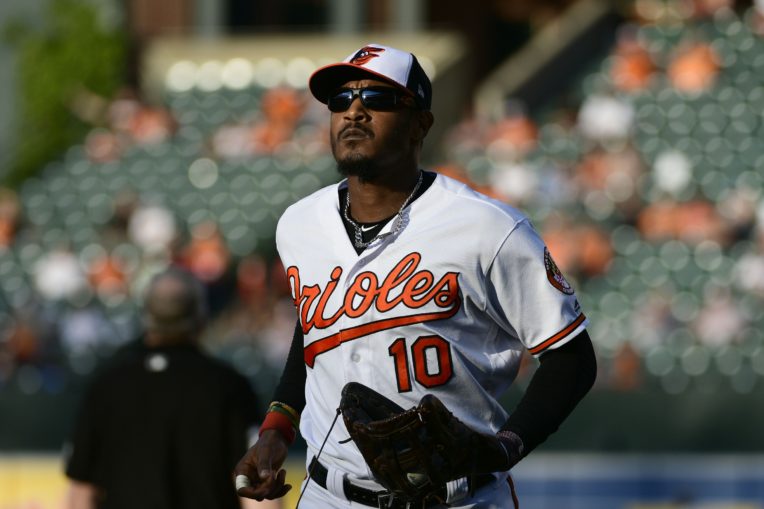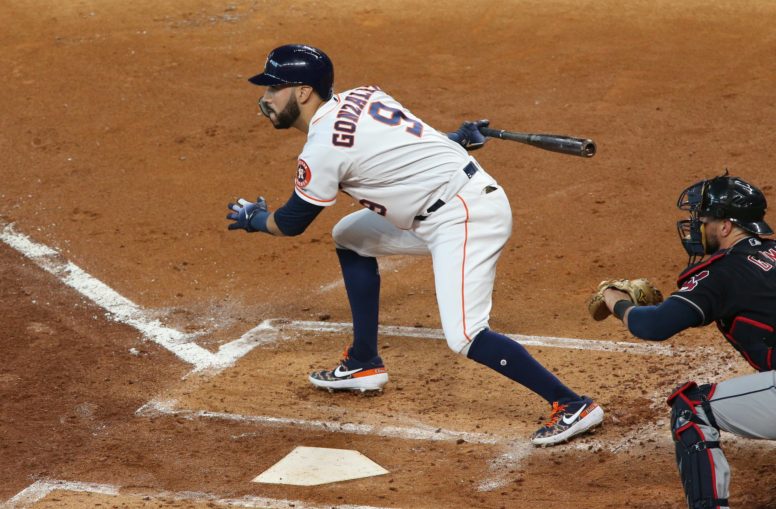
Mike Puma of the New York Post opined late Wednesday that the New York Mets could turn their sights on free-agent outfielders Adam Jones and Melky Cabrera since general manager Brodie Van Wagenen’s interest in A.J. Pollock has appeared to wane.
“While Van Wagenen is downplaying a big right-handed bat [in Pollock],” Puma wrote. “The industry still views the Mets as in the hunt for smaller pieces such as [Jones and Cabrera].”
As per Jon Heyman of FanCred Sports, Pollock is reportedly seeking a six-year contract, which would more than likely remove the Mets from the race for his services. If they were hypothetically willing to make an investment of that magnitude, one would have to assume they’d hitch their wagon to a bigger horse.
After the team signed catcher Wilson Ramos earlier this week, Van Wagenen seemed to change the sails on the remainder of the Mets’ offseason, alluding to a shift in priorities moving forward.
“We are going to be using our resources efficiently, but we also have to look at where our priorities are,” he told the New York Post on Monday. “Before [signing Ramos], a right-handed, middle-of-the-order bat was [really] important to give us balance. Now that we have that, it may not be the No.1 priority.”
That brings us to Jones and Cabrera. Neither will have an exorbitant price tag attached to them, and both would give the Mets varying degrees of increased offensive output. Unfortunately, neither may be a great fit for the roster Van Wagenen is attempting to build.

Jones, 33, is a five-time American League All-Star (2009, 2012 through 2015) and owner of a .278/.318/.456 slash line, 266 home runs, 878 runs batted in, 311 doubles, and a 108 OPS+ rating through 10 seasons in Baltimore.
Early on in his career, Jones was a top-notch major league outfielder. From 2008 through 2014, the Virginia native averaged 24 homers, 81 RBI, 28 doubles, and a .281/.322/.465 slash line over 147 games per season. His slash line has slipped over the last four seasons down to .275/.313/.448, and he has been below average offensively in two of them (98 wRC+ in 2016 and 2018).
His value has been in a continuous decline, recently falling from 4.7 fWAR in 2014 to 3.4 in 2015, 2.0 in 2016, 1.7 in 2017 and all the way down to 0.5 fWAR this past season.
A player’s value isn’t solely predicated on offensive skills. Over the last three seasons, his advanced defensive metrics show that Jones is certainly no longer a viable major league centerfielder (-40 defensive runs saved, -29.2 ultimate zone rating), and was below average during 272.2 innings in right field last season (-6 DRS, -1.8 UZR).
Spotrac has Jones pegged as receiving a four-year, $64 million deal this offseason, though MLB Trade Rumors has estimated his value at as little as $8 million for one season. The latter seems more likely given his recent lack of production (0.5 bWAR in 2018).
Keeping in mind that Brandon Nimmo and Michael Conforto should — and likely will — be playing every day with Juan Lagares being shuffled into the mix on a consistent basis, Jones could hypothetically slide into right, moving Nimmo and Lagares into a platoon-type situation in center field, with Conforto in left.
Jones would provide a jolt to the batting order, as well as a veteran presence to a young team, but there could be better options out there — or at least a way for the Mets to get more bang for their buck.
Melky Cabrera, 34, hit .280/.335/.420 for the Indians in 2018 after being signed to a minor-league deal, released in late June, then re-signed to another minor-league deal in early July. A corner outfielder, the Dominican native would be a low-risk move, but, again, any funds allocated to extend the depth of this team’s bench may be better spent elsewhere.

Two players, Marwin Gonzalez and Avisail Garcia, would fit this team’s need to a tee — Gonzalez likely more so than Garcia — depending on what Van Wagenen has in mind for the Mets’ bench.
Gonzalez, 29, plays shortstop, first base, and left-field, and is moving on from a first-class, world champion organization in the Houston Astros. Plain and simple, the Venezuelan native knows how a winning ballclub conducts its business. Versatility and playoff race experience, especially in a 29-year-old, is a nice combination.
Despite hitting just .247/.324/.409 in 552 plate appearances last season, Gonzalez has a .270/.328/.444 line with 162-game averages of 16 homers, 26 doubles, 61 RBI, and a 112 OPS+ rating since the start of 2015.
His value on the open market is being estimated at $17.9 million per season over four years ($71.8 million) via Spotrac, which could pose an issue to a notoriously frugal team who is rapidly approaching their payroll ceiling from last season — and that’s before arbitration and Jacob deGrom‘s possible contract extension.
With the deals that Van Wagenen has been able to pull off so far this offseason in Ramos and Jeurys Familia — both well below market value — if the price is right, Marwin Gonzalez is the guy, in this writer’s opinion.
Garcia, 27, was non-tendered by the Chicago White Sox earlier in the offseason after a sub-par 2018 season. After putting up a .330/.380/.506 with 18 homers, 27 doubles, and 80 RBI over 561 plate appearances in 2017, the Venezuelan native hit .236/.281/.438 in an injury-shortened year (hamstring).
After making $6.7 million last year, Garcia will enter his final arbitration-eligible season with a new team. The right fielder certainly has an offensive upside to him, as well as solid defensive metrics (-2 DRS, 1.7 UZR since 2016).
While Jones and Cabrera might fall on opposite ends of the “just not a fit” spectrum for the Mets, both Gonzalez and Garcia would be solid additions for a just-a-few-more-moves-away team.
The free agent market also includes the likes of Jon Jay, Nick Markakis, Josh Harrison, Carlos Gomez, Denard Span, Matt Joyce, Curtis Granderson and Brandon Guyer.
Yasiel Puig could also be a solid candidate, but there’s already been reports of the Mets not having interest in the talented outfielder.
Or Brodie Van Wagenen could simply go out and sign Bryce Harper to a ten-year, third-of-a-billion-dollar contract, fill out the roster with replacement-level players, and call it a day. But that’s another conversation for another day.















